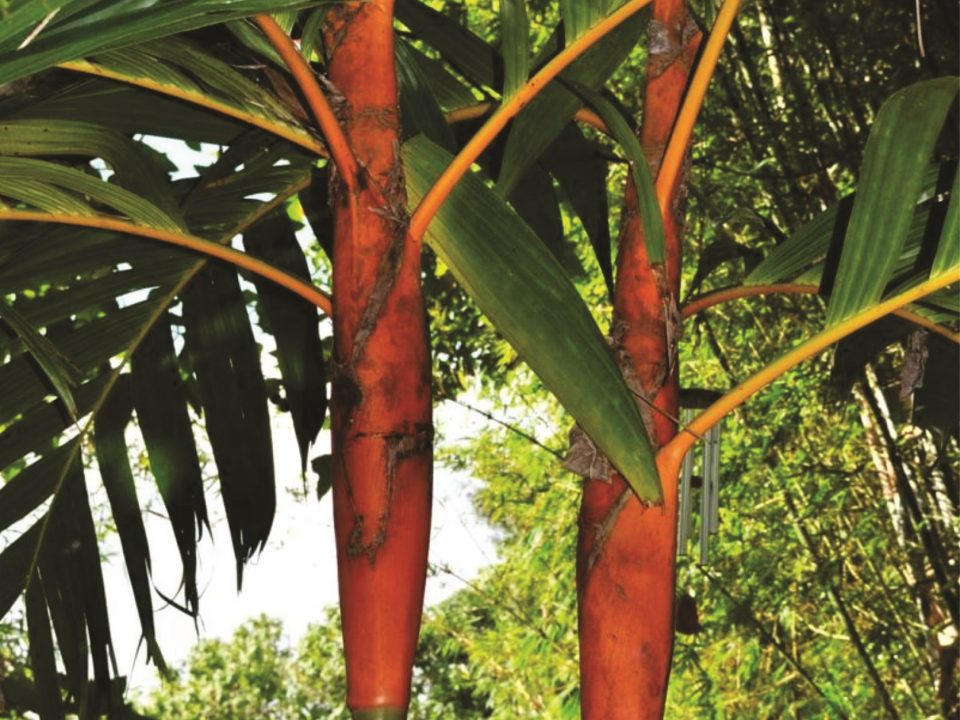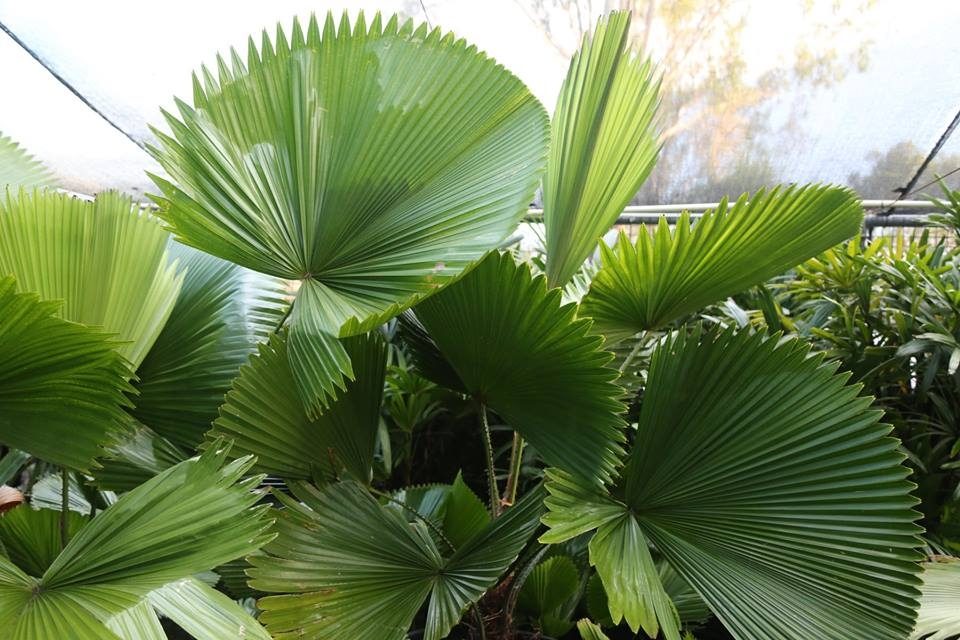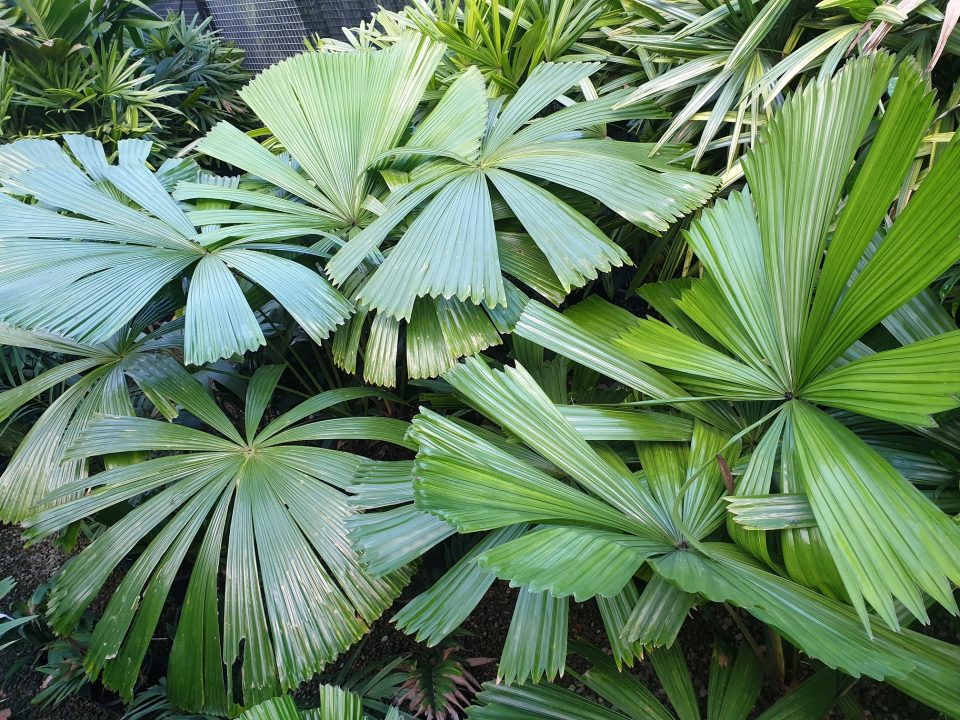- OPEN 7 DAYS 8AM - 4PM | 174 Dowding St. Oxley, Brisbane
- (07) 3375 5390
- sales@oxleynursery.com.au
Rhapis Palm, Lady Palm
Rhapis excelsa
Synonyms: Chamaerops excelsa, Trachycarpus excelsus.
Rhapis Palms are popular the world over as a hardy indoor plants for low light situations. Originally cultivated by the Japanese for use in shogunate palaces, Lady Palms are still one of the most elegant choices for an indoor specimen.
Applications
- Indoor specimen
- Screening
- Tropical / Balinese
- Foliage interest
- Understory plant
- Pots & Tubs
 Care
Care
No pruning required. Selected canes can be removed to attempt to control height and density. Prune away dead leaves if desired. Use quality fertilizer such as Troforte or Organic Link to maintain strong growth.
 Features
Features
-
Lush dark green foliage
- Attractive fibrous canes
- Very forgiving houseplant
-
Adaptable and cold-hardy
-
Available in a range of variegated leaf forms (see below).
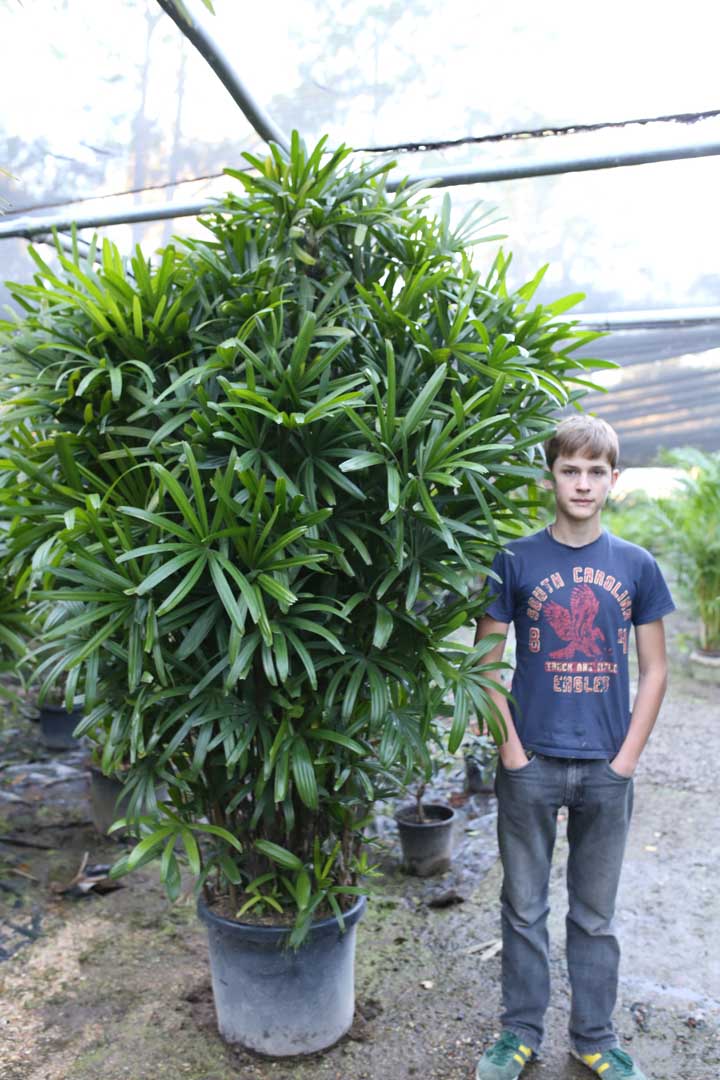
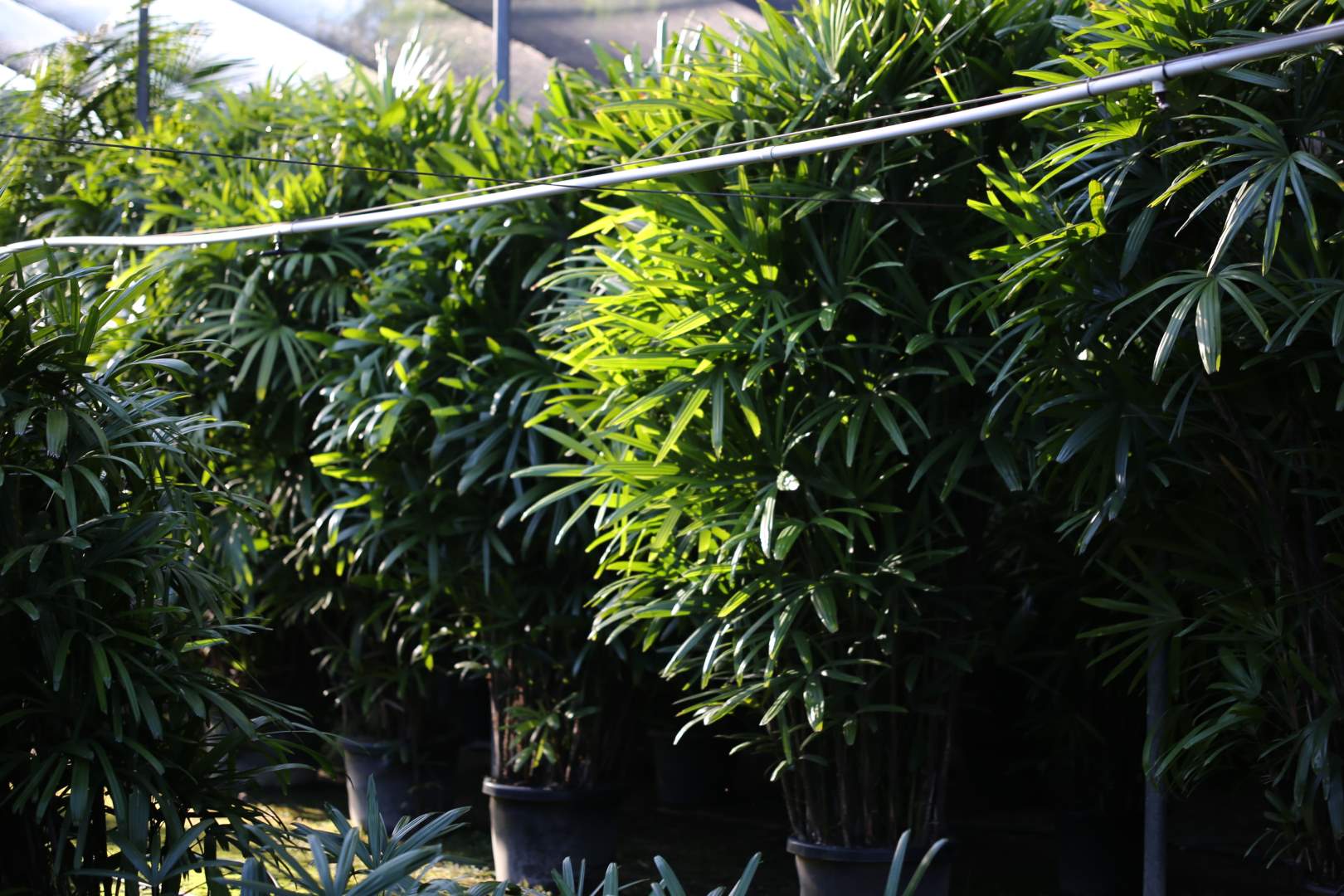
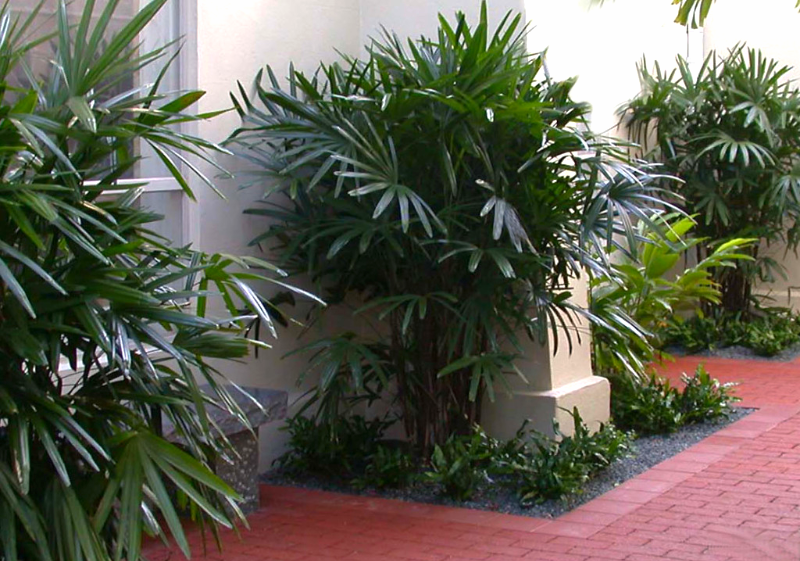
Size
Width: Indefinite, clumping
Light
Watering
Growth Rate
Variegated Rhapis
There are in fact dozens of variegated Lady Palm varieties. Some are rare and highly prized, often selling for thousands of dollars. However, they aren't all that inaccessible. Oxley Nursery has a great range of variegated Rhapis at affordable prices.
Why choose a variegated form?
These forms are just as easy to grow as the green variety and also thrive in low light. This makes the variegated types useful, as it can often be difficult to find anything that's not just plain green for shaded areas. Use them to break up blocks of other green foliage, or simply as gorgeous stand-alone specimens.
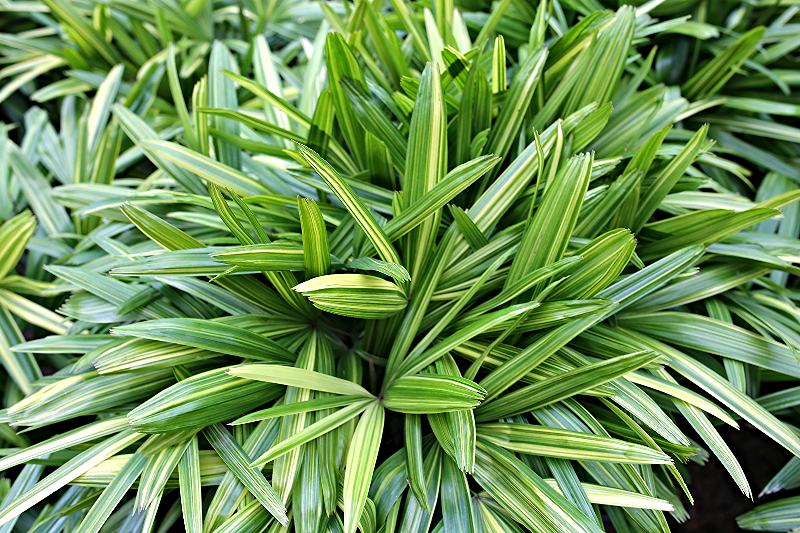
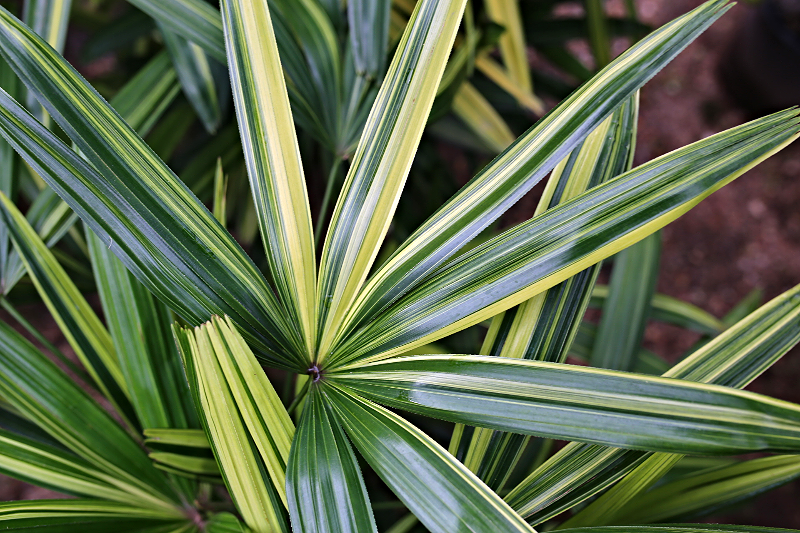
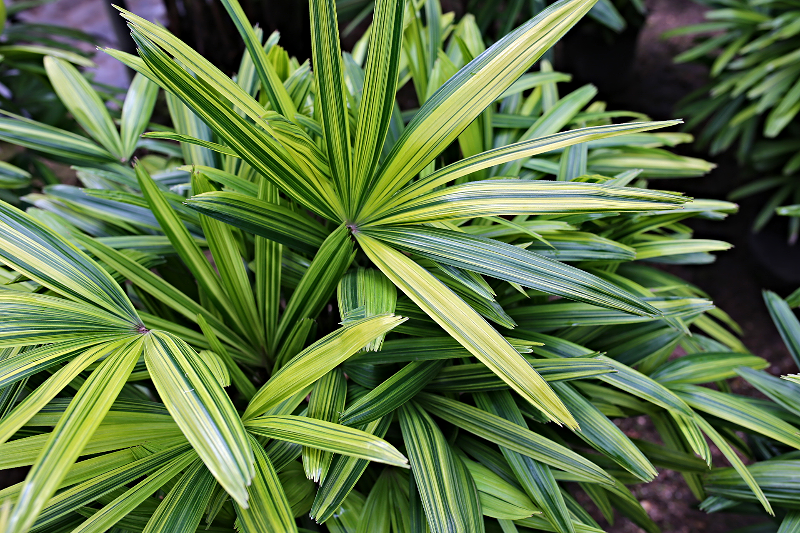

Ayanishiki
Developed from Zuikonishiki in 1976.
This is a prolific palm that produces offsets like no other. It's stripe pattern is quite fine and it also occasionally throws an offset that looks very much like its parent Zuikonishiki.
We have these in large quantities and sizes.
Zuikonishiki
Developed in 1958 from Kodaruma.
This is one of the easiest to grow and will reward you with beautiful offshoots. It has a distinct barcode stripe pattern and dark green with cream stripe.
Numbers of these are limited.
Kinponishiki
Developed in 1991 from Kannonchikushima.
This is a prolific and gorgeous palm. It's distinct feature is a lime-coloured stripe which makes it a bit more subtle than Zuikonishiki. It is also has a natural shine on the leaves which pics up light and adds to it's lustre and appeal.
We have healthy numbers of these.
Other Varieties
We have a number of more advanced species including:
Taizannishiki
Eizannishiki
Nanzannishiki
Heiseinishiki
These are slightly slower and less productive but with high quality colour and stripe. Prices vary according to species, size and quality of stripe.


